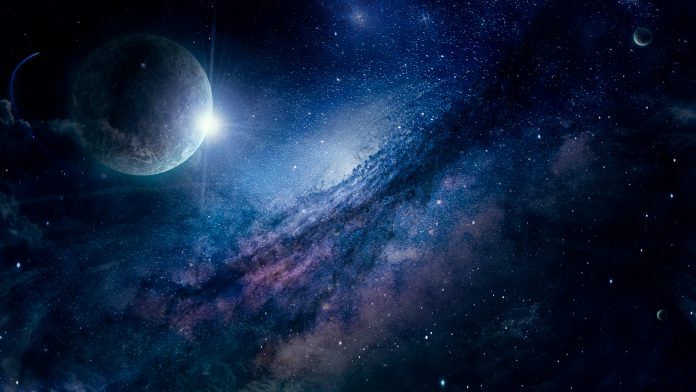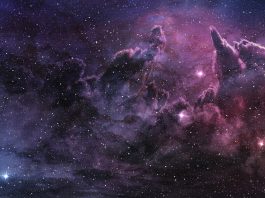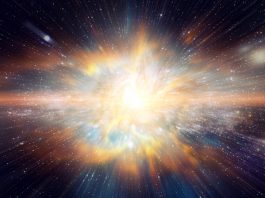Researchers, led by the University of Bonn, Germany, confirm models on the evolution of our Universe by observing a gas filament with a length of 50 million light years.
More than half of the matter in our Universe is yet to be observed. Astrophysicists suspect that this matter is located in so-called filaments, unfathomably large thread-like structures of hot gas that surround and connect galaxies and galaxy clusters. A team led by the University of Bonn has now for the first time observed a gas filament with a length of 50 million light years. Its structure is similar to the predictions of computer simulations, therefore, the observation also confirms existing models and theories regarding the evolution of our Universe.
Following the Big Bang, 13.8 billion years ago, the Universe expanded at breakneck speed and a gigantic gas cloud in which matter was almost uniformly distributed. In some parts the cloud was a bit denser than in others and for this reason, there are planets, stars and galaxies today. This is because the denser areas exerted slightly higher gravitational forces, which drew the gas from their surroundings towards them. More and more matter therefore concentrated at these regions over time. The space between them, however, became emptier and emptier.
Understanding the space between galaxy clusters
Over the course of 13 billion years, a sponge structure developed: large holes without any matter, with areas in between where thousands of called galaxy clusters formed. If this theory is correct, the galaxies and clusters should still be connected by remnants of this gas, like the threads of a spider web.
Professor Thomas Reiprich from the Argelander Institute for Astronomy at the University of Bonn, explained: “According to calculations, more than half of all baryonic matter in our universe is contained in these filaments – this is the form of matter of which stars and planets are composed, as are we ourselves.”
Due to the enormous expansion of the filaments, their matter is extremely diluted: containing just ten particles per cubic metre, which is much less than the best vacuum we can create on Earth. With a new measuring instrument, the eROSITA space telescope, Reiprich and his colleagues were able to make the gas fully visible for the first time.
Reiprich added: “eROSITA has very sensitive detectors for the type of X-ray radiation that emanates from the gas in filaments. It also has a large field of view – like a wide-angle lens, it captures a relatively large part of the sky in a single measurement, and at a very high resolution.”
Confirming the models on the evolution of our Universe
In their study, the team examined a celestial object called Abell 3391/95. This is a system of three galaxy clusters, which is about 700 million light years away from us. The eROSITA images show not only the clusters and numerous individual galaxies, but also the gas filaments connecting these structures.
Reiprich said: “We compared our observations with the results of a simulation that reconstructs the evolution of the universe. The eROSITA images are strikingly similar to computer-generated graphics. This suggests that the widely accepted standard model for the evolution of the Universe is correct.” Most importantly, the data show that the missing matter is probably actually hidden in the filaments.









